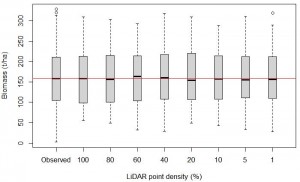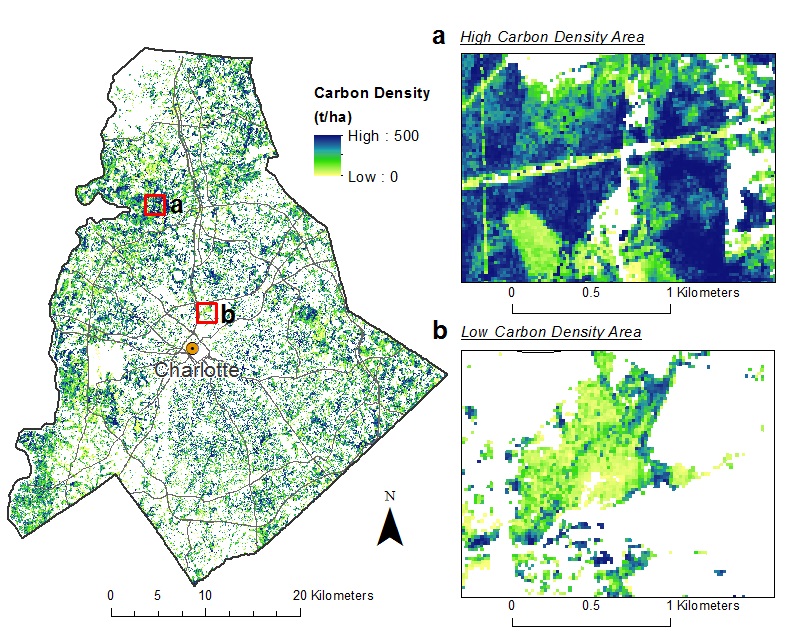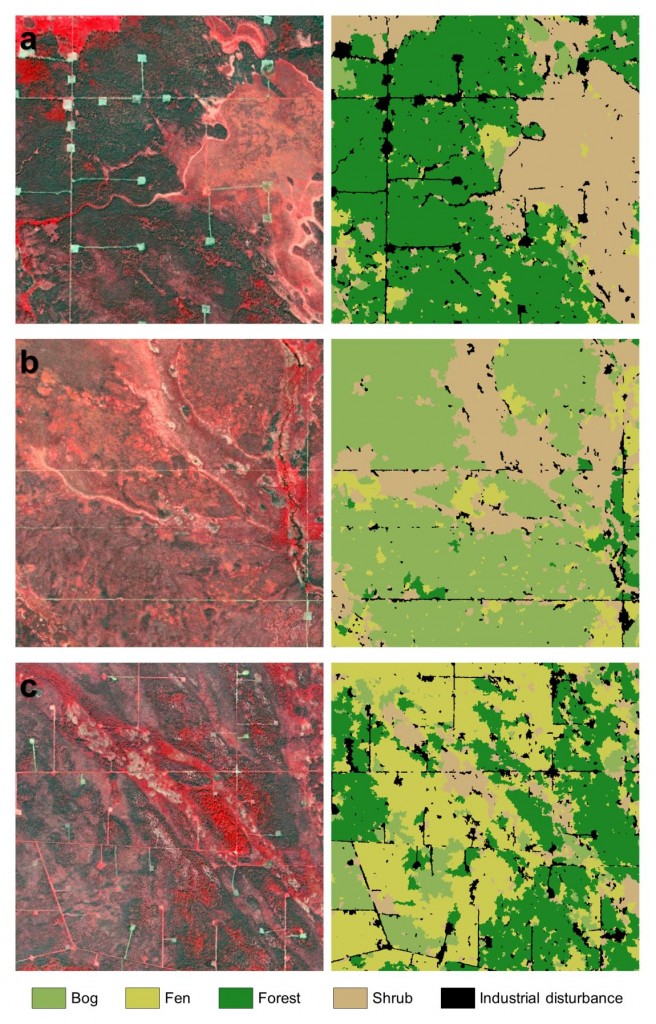Dr. Chen was invited to share the findings of his urban forest projects with City of Charlotte, and several local organizations, including TreesCharlotte (http://treescharlotte.org/) and Sustain Charlotte (http://www.sustaincharlotte.org/). The presentation was given on January 13 on campus of UNC Charlotte. The attendees include John Autry (City Councilman), Dave Cable (Director of TreesCharlotte), Shannon Binns (Executive Director of Sustain Charlotte), Tim Porter (Assistant City Arborist), etc. Dave commented that the “research provides a great step forward in understanding the value of our urban forest and linkages between the forest, carbon, and development patterns”. Tim pointed out that the “research focus will absolutely help us better understand Charlotte’s urban forest”.
Through a collaboration with the local government, organizations and communities, the research team led by Dr. Chen is continuously developing new remote sensing algorithms to analyze the impact of urban development policies on forest growth in various types of neighborhoods.



